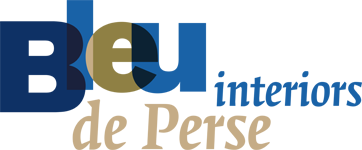Using them correctly can help boost your visibility on search engine results pages. Adding these personalized product sections enhances your internal linking strategy, since it connects different parts of your website together. This makes it easier for Google to discover your webpages and display them in search results. By optimizing your website, you’re helping customers find your products and services. But, you must measure your optimization tactics and refine your SEO strategy to ensure continued progress. Technical SEO keeps your website secure and accessible, which are core elements for designing your website user experience (UX).
These brief written descriptions are a great place to use your keywords and your business name! The goal of on-page SEO is to help Google match your website to your target audience. If the search engine can’t quickly and easily understand what your site is about, it’s less likely to display it in search results.
Meta Description Optimization
- Every day, eager shoppers use search engines like Google to inform their purchase decisions.
- (As soon as the AI understands more languages, we’ll add them!) If you are working in a foreign language, I highly recommend taking the « Just On-Page » package.
- Content should not be created for the purpose of ranking highly in search alone.
- On the other hand, poor on-page SEO can impact your site’s rankings negatively.
Internal linking is where one page links to another page on the same domain. Finally, optimizing and auditing the images on your site is also beneficial in increasing your chances of them appearing in Google Image Search results. The Alt SEO Anomaly Text (or alt attribute/alt tag) of an image is the HTML element used to textually describe an image on the Web. Importantly, notice that the heading is exactly the same as our search intent query.
Then address every main point that your audience is looking for. Short answer – Match the average word count from the top 10 ranking pages on Google. From a copywriting point of view, a lower reading level as close to basic as possible is advised for most websites. That means adding your own unique experiences, strategies and knowledge. Only one of those pages containing the “duplicate content” will rank for it.
📝 59. Optimise Your Internal Linking
Slow websites can frustrate users, increase bounce rates and signal to search engines that your site is not a high-quality resource. This Google tool evaluates your site’s page speed and provides suggestions on how to improve it. On page SEO is the act of improving the technical and content elements of your web pages.
As long as the internal links are relevant and provide a good UX to the reader, you don’t have to worry about the numbers. Although not all of the factors mentioned in this guide are ranking factors, all of them correlate with higher rankings. It means that sites ranking high usually have very good results in these areas of on-page optimization. As computer vision models advance, search engines will better understand and surface relevant images and videos. Make sure these are clear, keyword optimized, and click-worthy to entice visitors to your site. Add your relevant H2s, H3s, and further headings using both primary and secondary keywords where applicable.
If you have a small business, acquiring that qualified traffic is key to growing brand awareness, conversions, and sales. The URL is a minor ranking signal, but you cannot expect to rank on the basis of the words in your domain/page names alone (see Google EMD update). When naming your pages or selecting a domain name, have your audience in mind first. How you choose to optimize your site depends largely on your audience, so make sure you have them in mind when crafting your website content. Like it sounds, “duplicate content” refers to content that is shared between domains or between multiple pages of a single domain. “Scraped” content goes a step further, and entails the blatant and unauthorized use of content from other sites.
